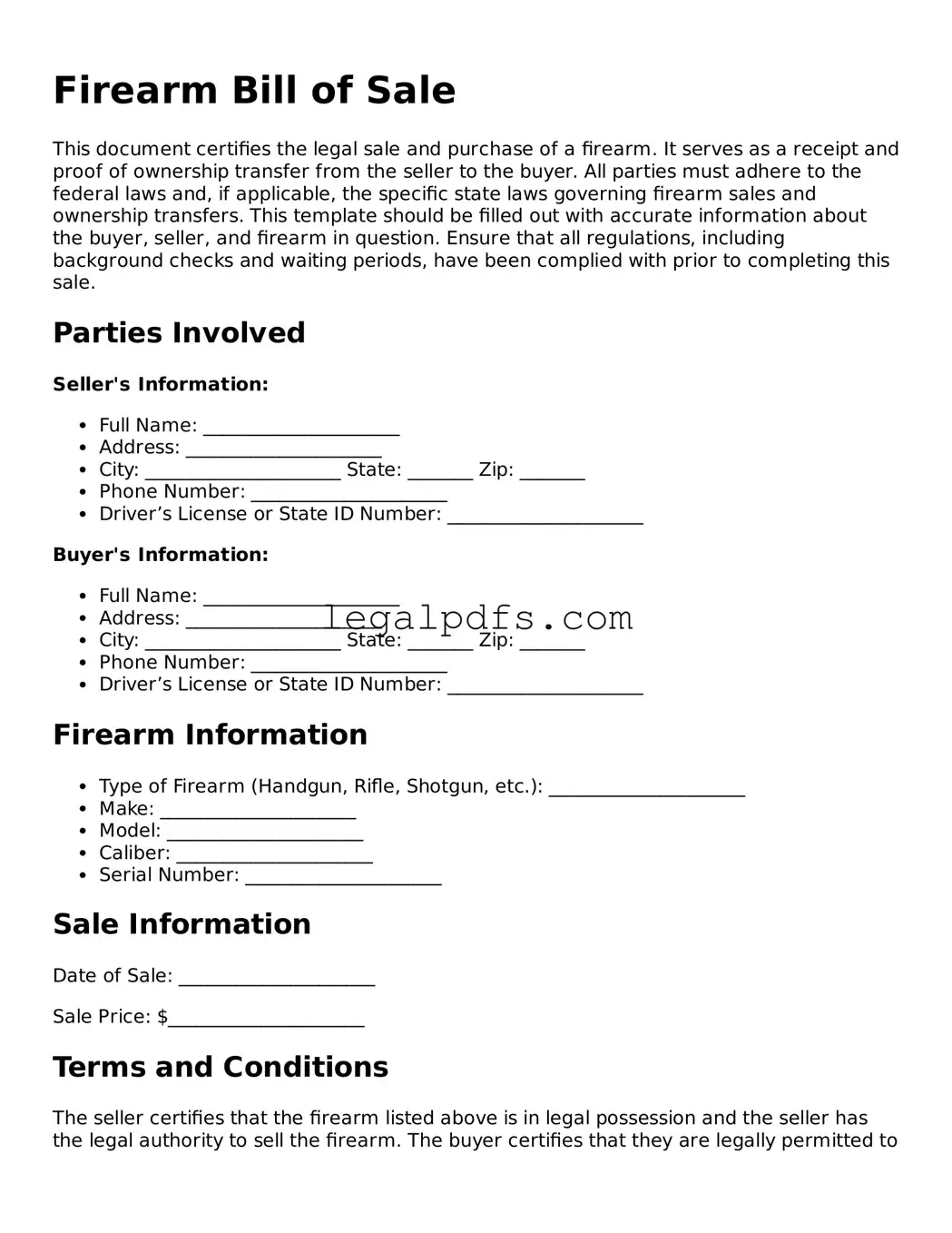What is a Firearm Bill of Sale?
A Firearm Bill of Sale is a legal document that records the sale or transfer of a firearm from one party to another. It serves as proof of ownership and documents the details of the transaction, including information about the buyer, seller, and firearm itself.
Why is a Firearm Bill of Sale important?
This document is important because it provides a record that the transaction occurred, which can be useful for legal, personal, or insurance purposes. It helps ensure that the transfer of the firearm is conducted legally and that both parties have agreed to the terms of the sale.
What information is included in a Firearm Bill of Sale?
Typically, a Firearm Bill of Sale includes the seller's and buyer's names and addresses, a description of the firearm (including make, model, caliber, and serial number), the sale price, the date of the sale, and signatures of both parties. It may also include warranties or statements about the firearm's legal status.
Is a Firearm Bill of Sale required by law?
The requirement for a Firearm Bill of Sale varies by state. Some states require a formal bill of sale for the legal transfer of a firearm, while others do not. It is always advised to check local laws and regulations to ensure compliance.
Does a Firearm Bill of Sale need to be notarized?
In some cases, yes. Depending on the state, a notarized Firearm Bill of Sale may be required to validate the document. Even if notarization is not required by law, having the document notarized can add an extra layer of security and legal protection for both parties involved.
Can I create my own Firearm Bill of Sale?
Yes, individuals can create their own Firearm Bill of Sale. However, it is important to include all necessary details and adhere to any specific requirements your state may have. Utilizing a template or seeking legal advice can help ensure that the document is properly prepared.
How does a Firearm Bill of Sale protect the buyer?
The document offers protection to the buyer by providing proof of the transfer of ownership. It can serve as evidence that the buyer legally acquired the firearm and has fulfilled all conditions of the sale, including payment.
How does a Firearm Bill of Sale protect the seller?
For the seller, a Firearm Bill of Sale helps to document that they have legally transferred the firearm and relinquished ownership, potentially protecting them from future liabilities associated with the firearm.
Where can I find a template for a Firearm Bill of Sale?
Templates for a Firearm Bill of Sale can be found online through various legal resources or state government websites. It's important to ensure that any template used complies with the laws of the state where the transaction is taking place.
